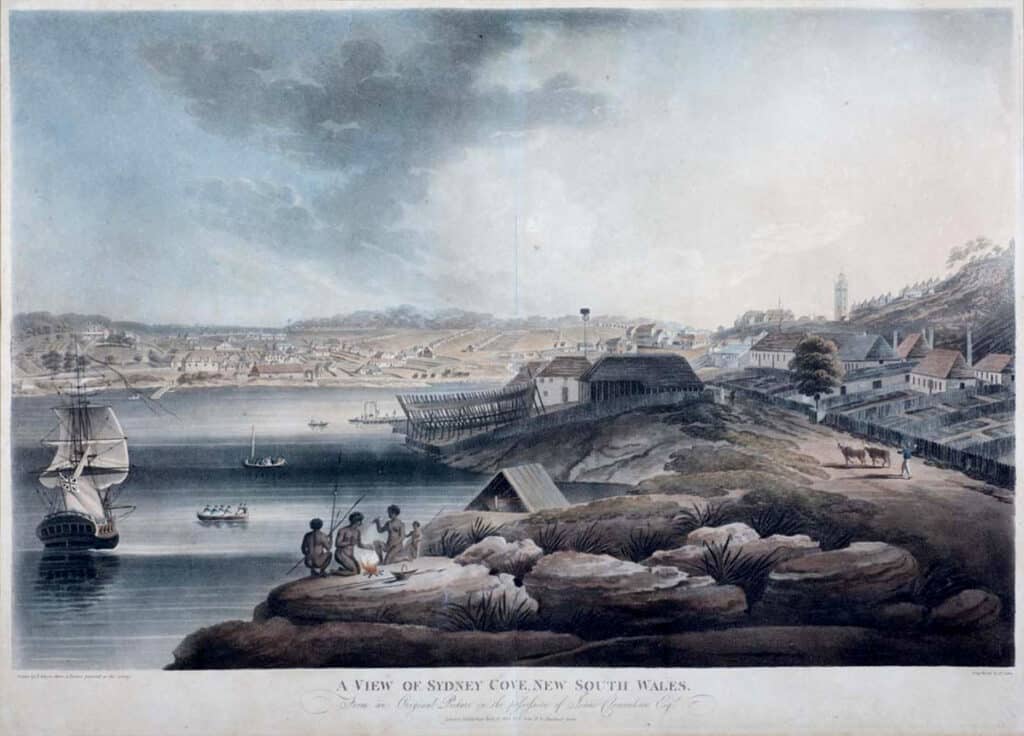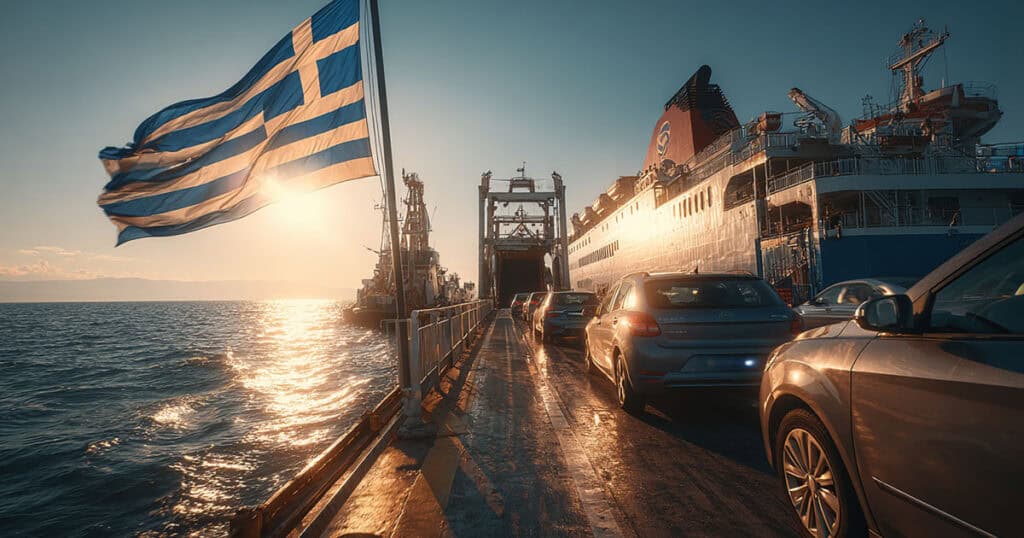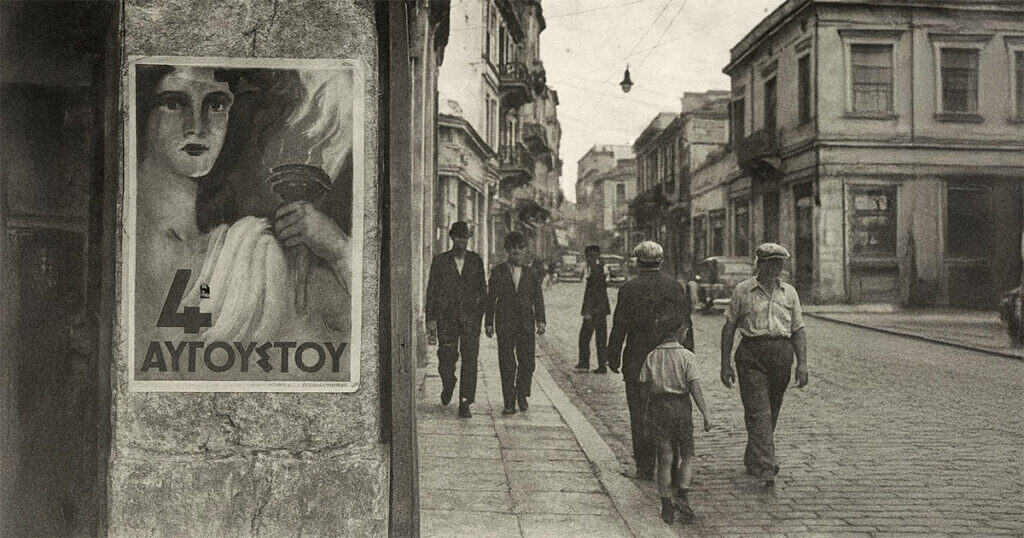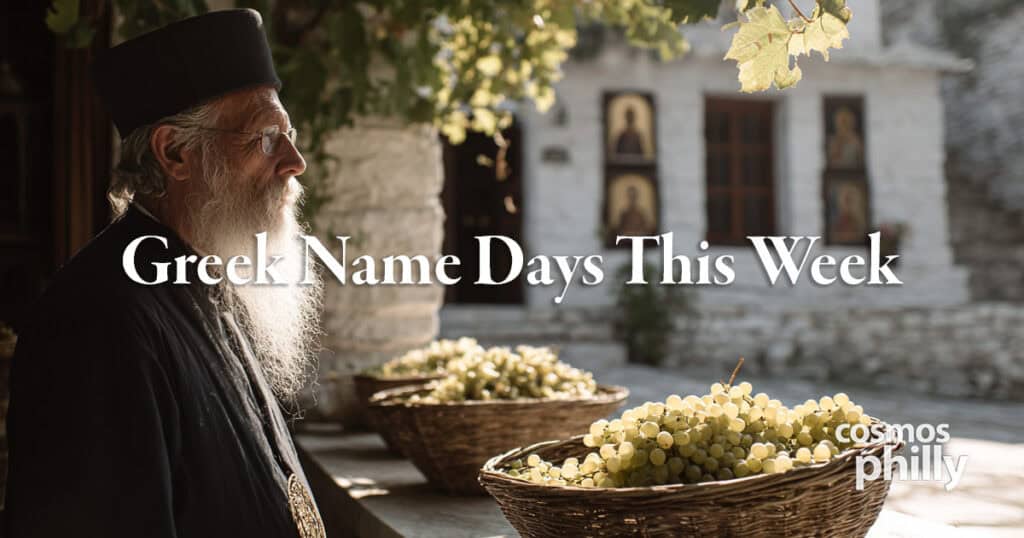Greece of the 1850’s was not what we see on our maps today. The country was only 2 decades old, and consisted of the Peloponnese (“Morea”), a small portion of Mainland Greece (“Livadia”) and a few Aegean islands, (“Cyclades”) while the rest of the area and the islands, including Crete, although populated by Greeks, were under the control of the Ottomans, Brits, Italians, and even Egyptian/Ottomans.
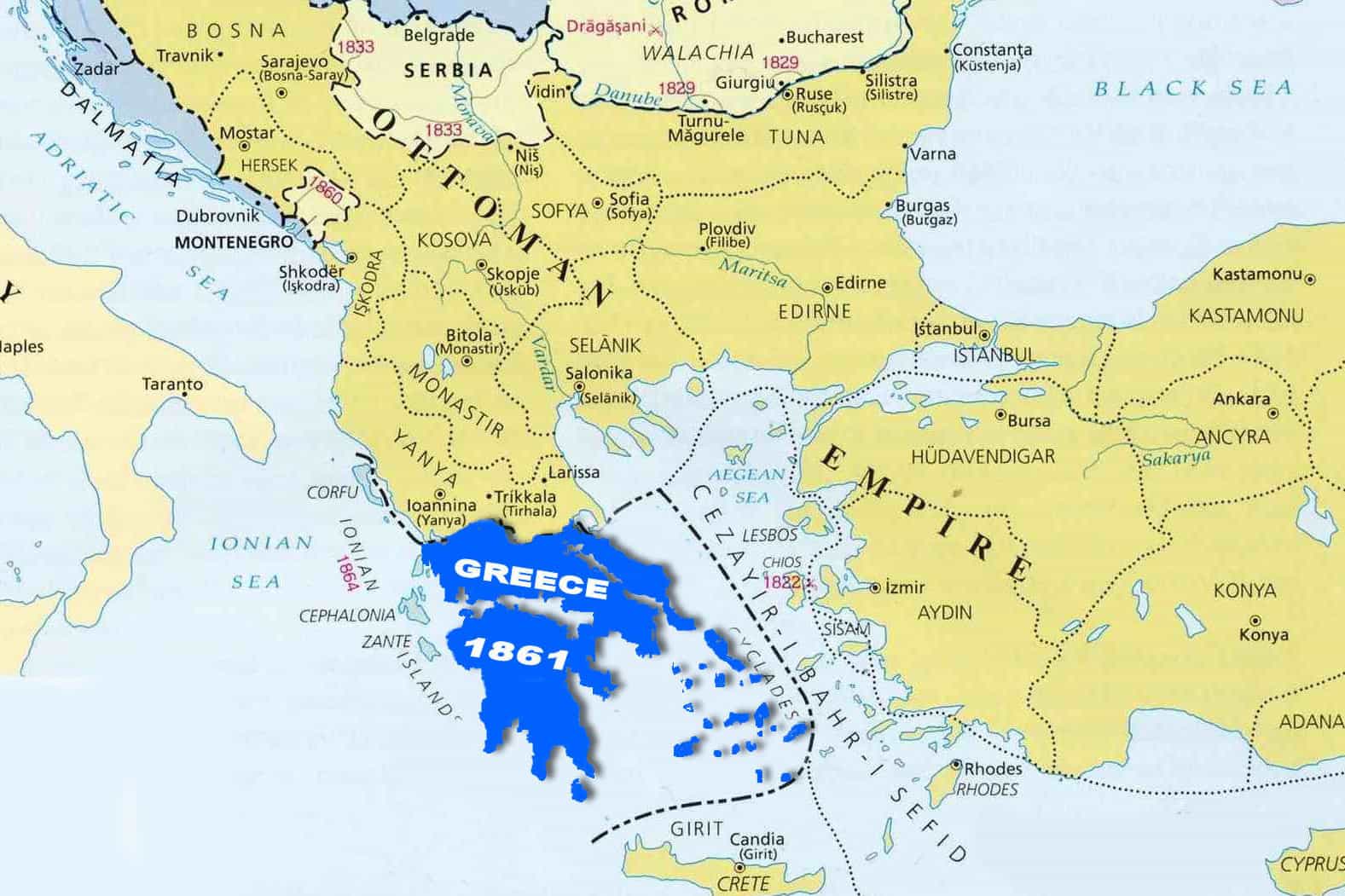
At that time, Greece had a King: King Otto, a young Bavarian Prince – son of the philhellene King Ludwig I of Bavaria – who had been selected (by foreign powers) as the King of Greece. This “Bavarian connection” had created opportunities for German businessmen. Attracted by this benign environment between King Otto’s (Greek: ‘Οθωνας) Greece and Germany, entrepreneurs such as the Bavarian Gustav Clauss sought agricultural opportunities in the welcoming Mediterranean climate.
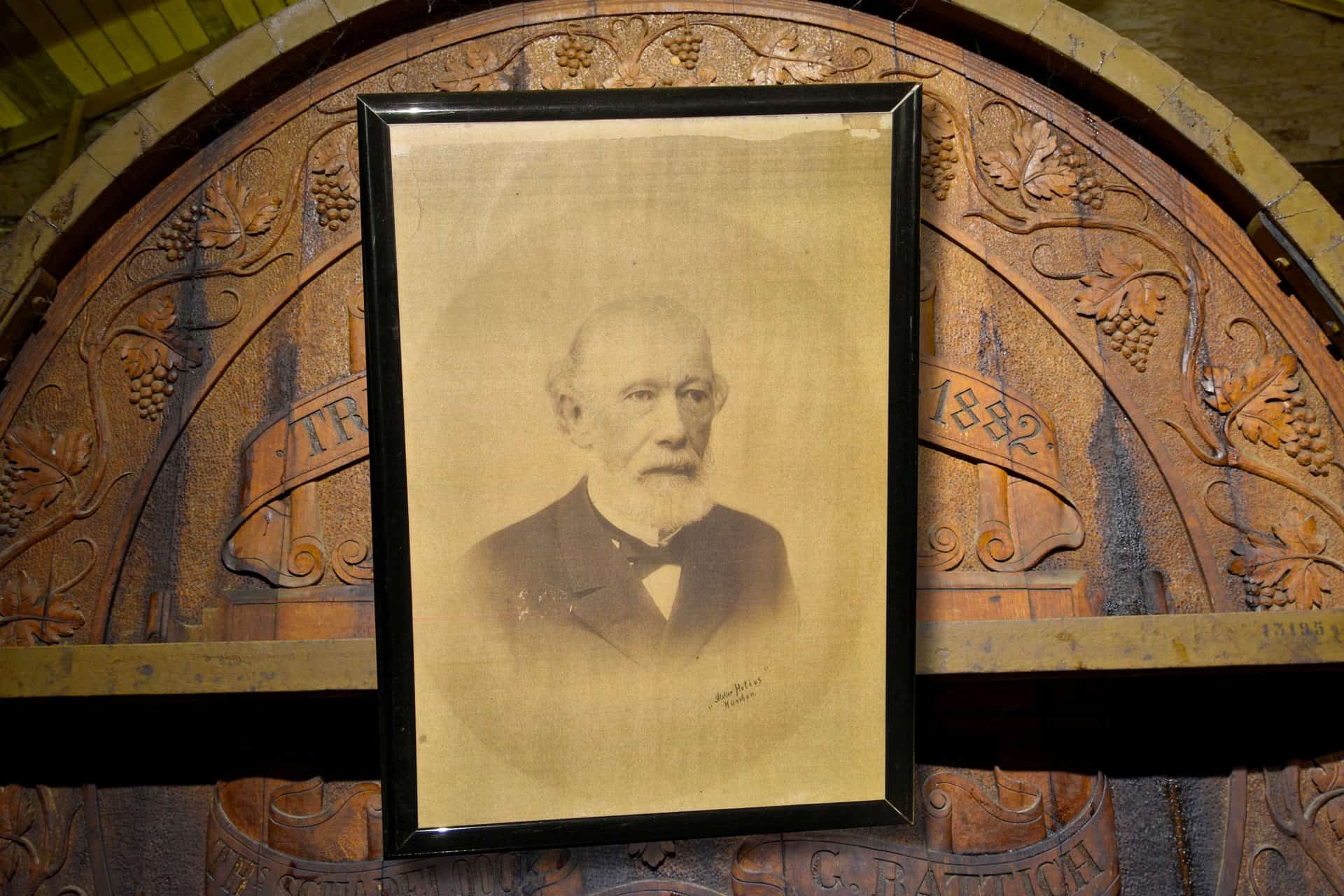
Coming, in 1854 to Patra, in the area known since ancient times as “Achaia,” Gustav Clauss saw such an opportunity, and a few years later, in 1861, acquired a plot of land on a hill overlooking the town of Patra, and founded a wine-growing, wine-making establishment he named “Gutland” – which we now know as “Achaia Clauss.”
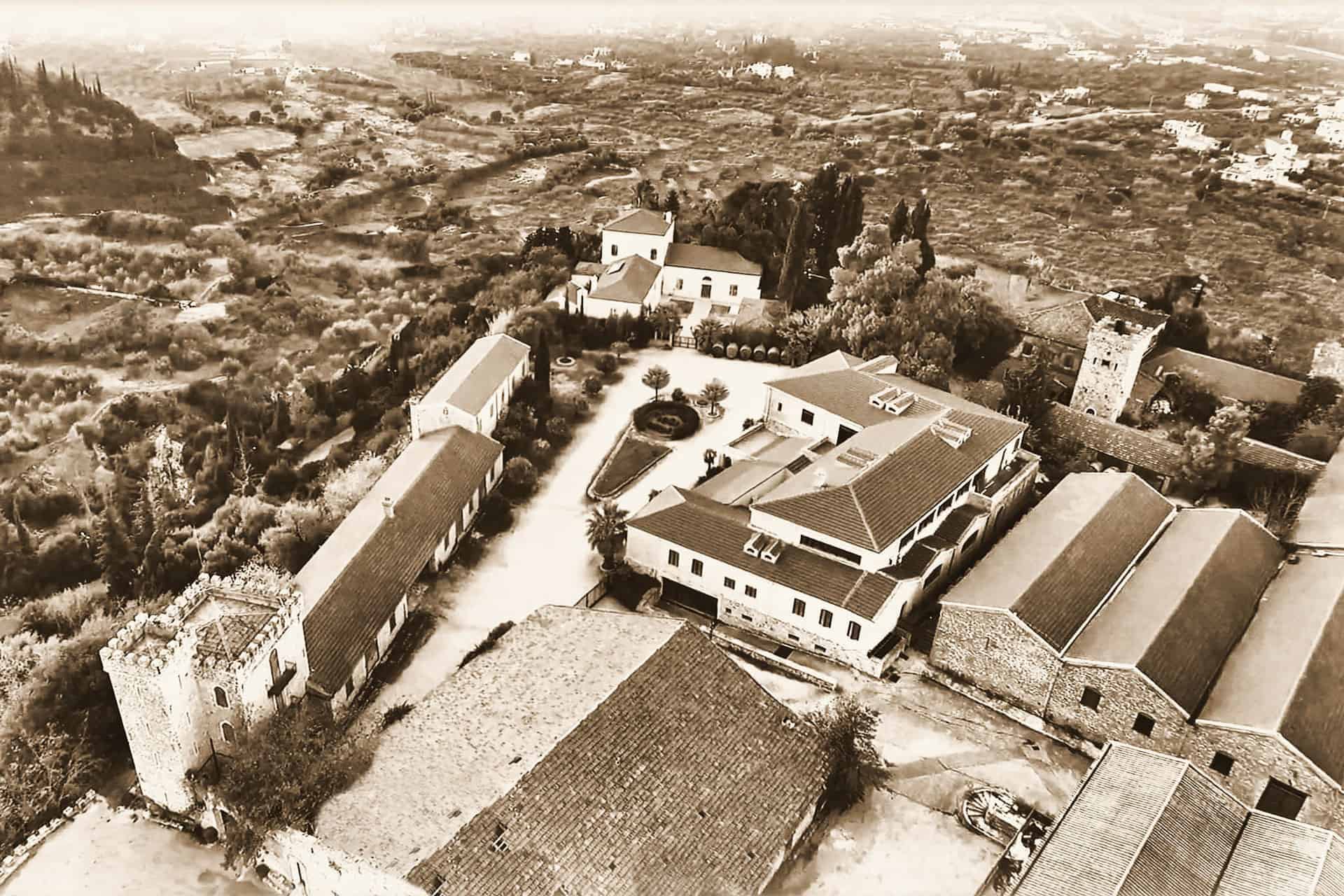
These were turbulent times – in the new world, America was rapidly sliding toward its Civil War, and Europe was at arms, fighting the Crimean War of 1854. Greece was also involved in the European wars, unfortunately on the losing side, and the resulting dissension – which eventually led to King Otto’s replacement by a Danish Prince (King George I) – and a series of great internal political upheavals had created a certain amount of lawlessness on the land; so Clauss wisely built his winery in the form of a fort, as a defense against brigands and even hostile neighbors; hence the “Castle” look, which the entrance and other buildings still bear today.
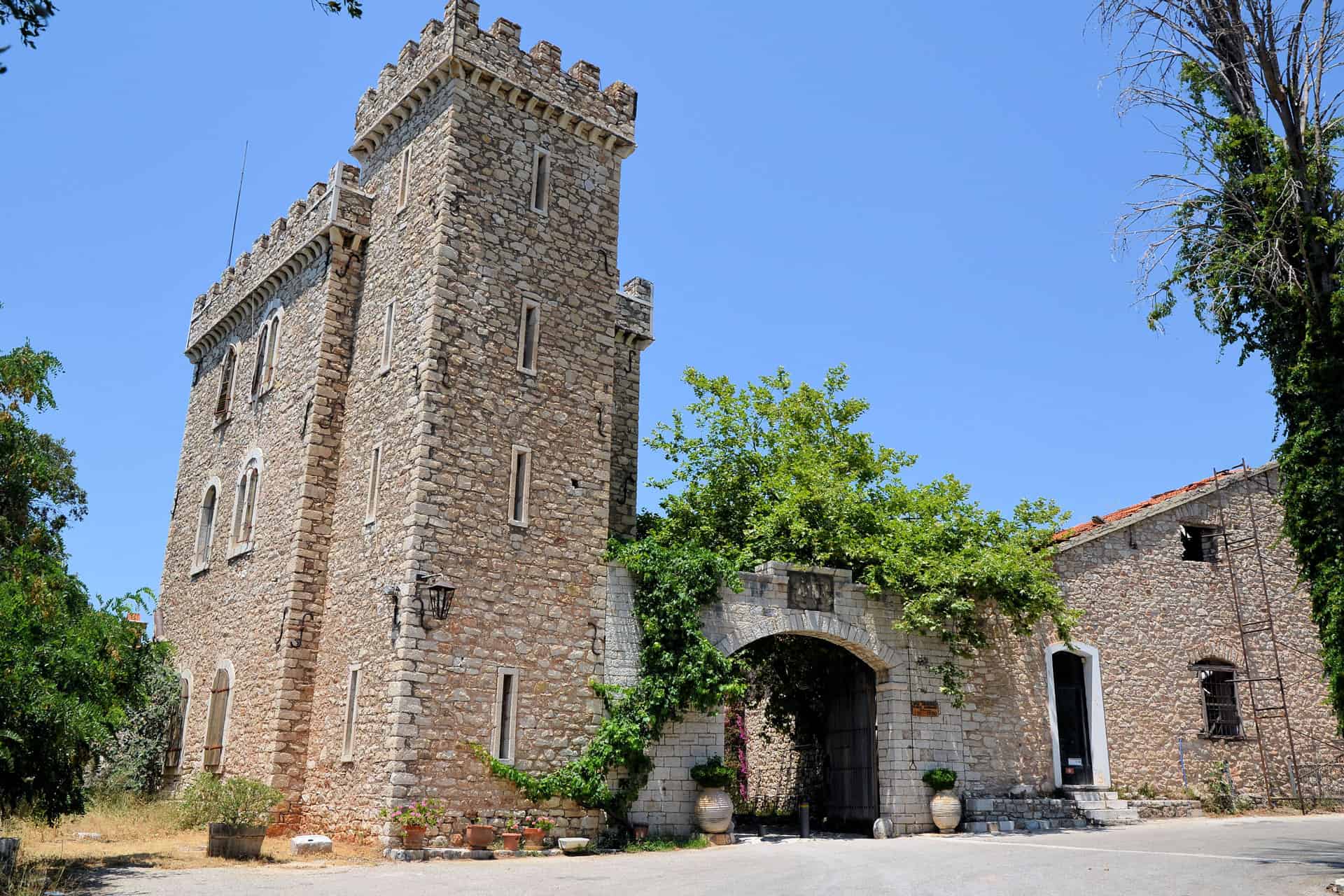
Overcoming these and many other difficulties since then, over the last 157 years, Clauss and his successors acquired more land for cultivation and grew the business which, with several changes of ownership – now a Greek company – continues to thrive. As its fame grew, “Gutland,” or “Achaia,” and eventually “Achaia Clauss,” received many distinguished visitors – including this author – as well as kings, queens, and other world leaders and celebrities.
Along with the numerous awards displayed, several mementos are especially treasured, which, given the German origin of the winery, include a handwritten note of thanks by Chancellor Otto von Bismarck – the acknowledged uniting spirit of a single Germany – and an order for wine from the Austrian composer Franz Liszt – who mentions drinking the wine during a dinner with Richard Wagner.
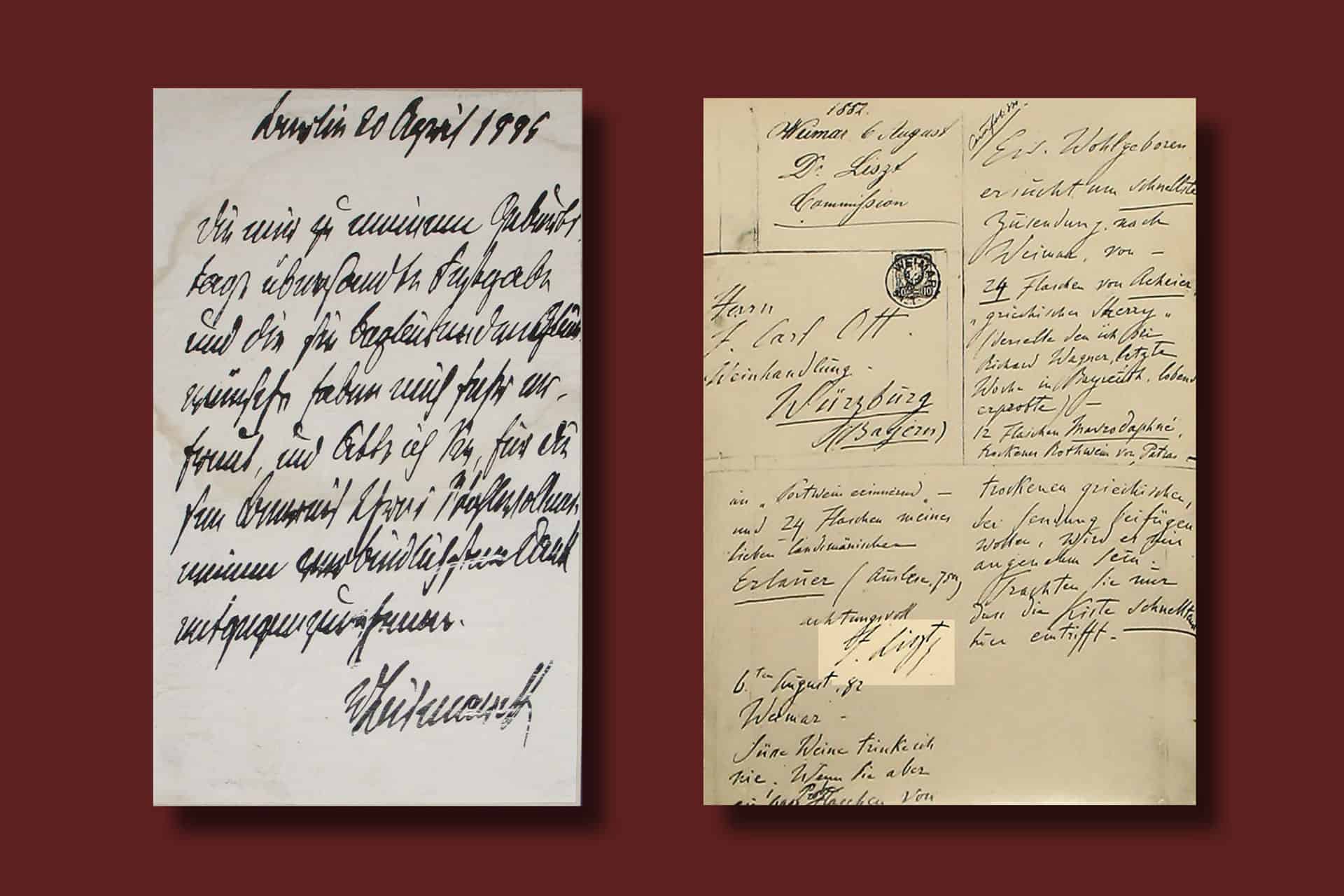
One of the legacies of Gustav Clauss is the world-known fortified wine known as “Mavrodaphne,” (in Greek “Μαυροδάφνη”) which, legend has it, he named after some particularly pretty (Greek, of course) girl with dark features. What Greek-American over the age of consent hasn’t enjoyed that rich, sweet, dark red appellation? (The author has once even enjoyed an ambrosiac bottle from their 100+year old vintage.)
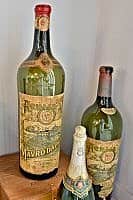
It’s a “must visit” site for wine lovers while in Greece, as well as a visual treat. Visitors are welcome, and treated to wonderful tours of the winery, by people who are experienced in the history of the site; many, such as Christy Manousou are postgraduate Oenologists (Vintners) – from the Greek word: “Οίνος” (wine) who spend time at the winery enhancing their professional skills.
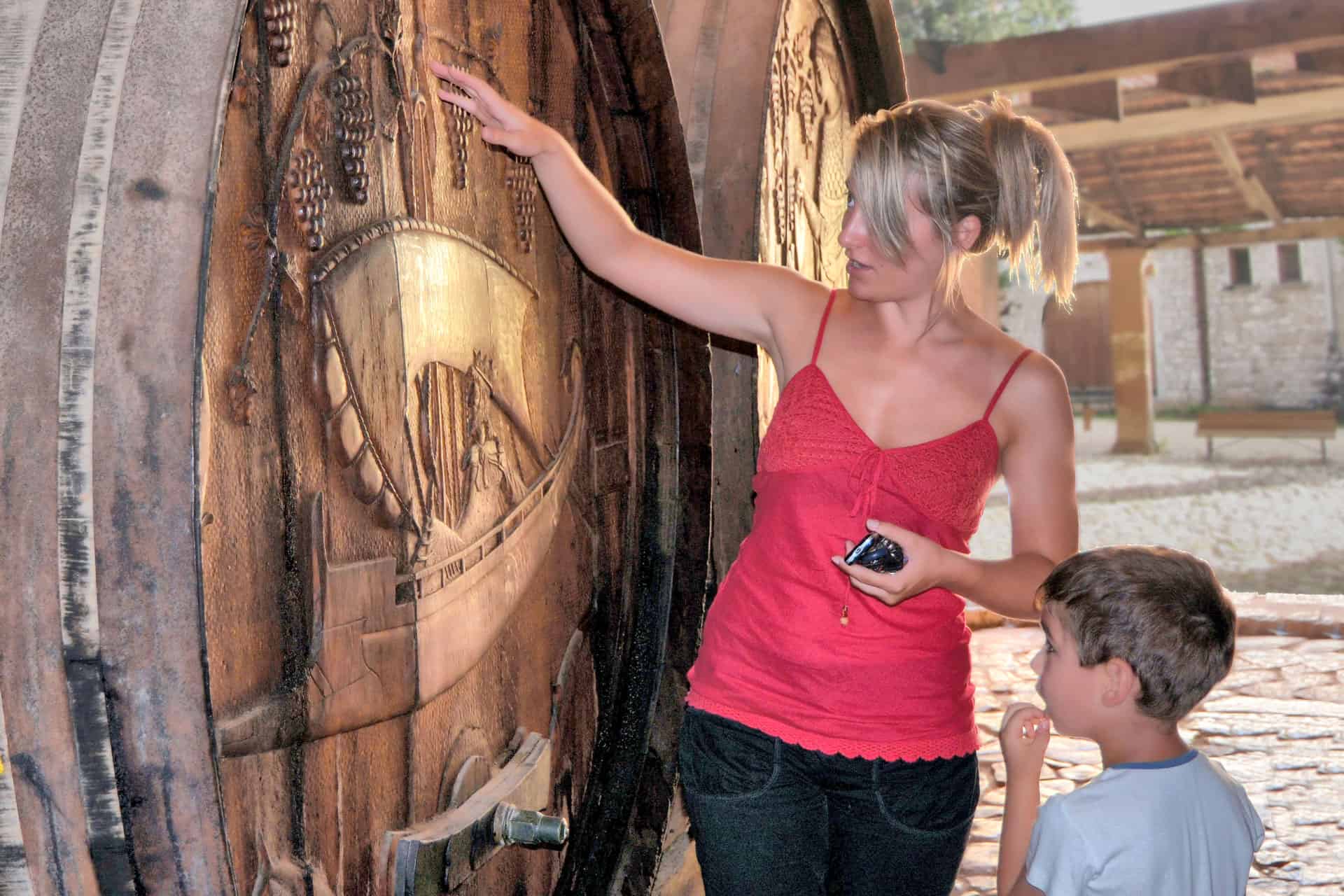
The tours encompass not only the wine-making areas, and the great barrel/storage areas, but also a great hall with vintage (pardon the pun) barrel-making equipment. (In years past, the winery made its own barrels. Now, most of its barrels are acquired from France.) The impressive halls and artful barrels attract photographers and artists such as Konstantinos Kerestentzis, who add their personal interpretation to the original architectural arrangements and carvings.
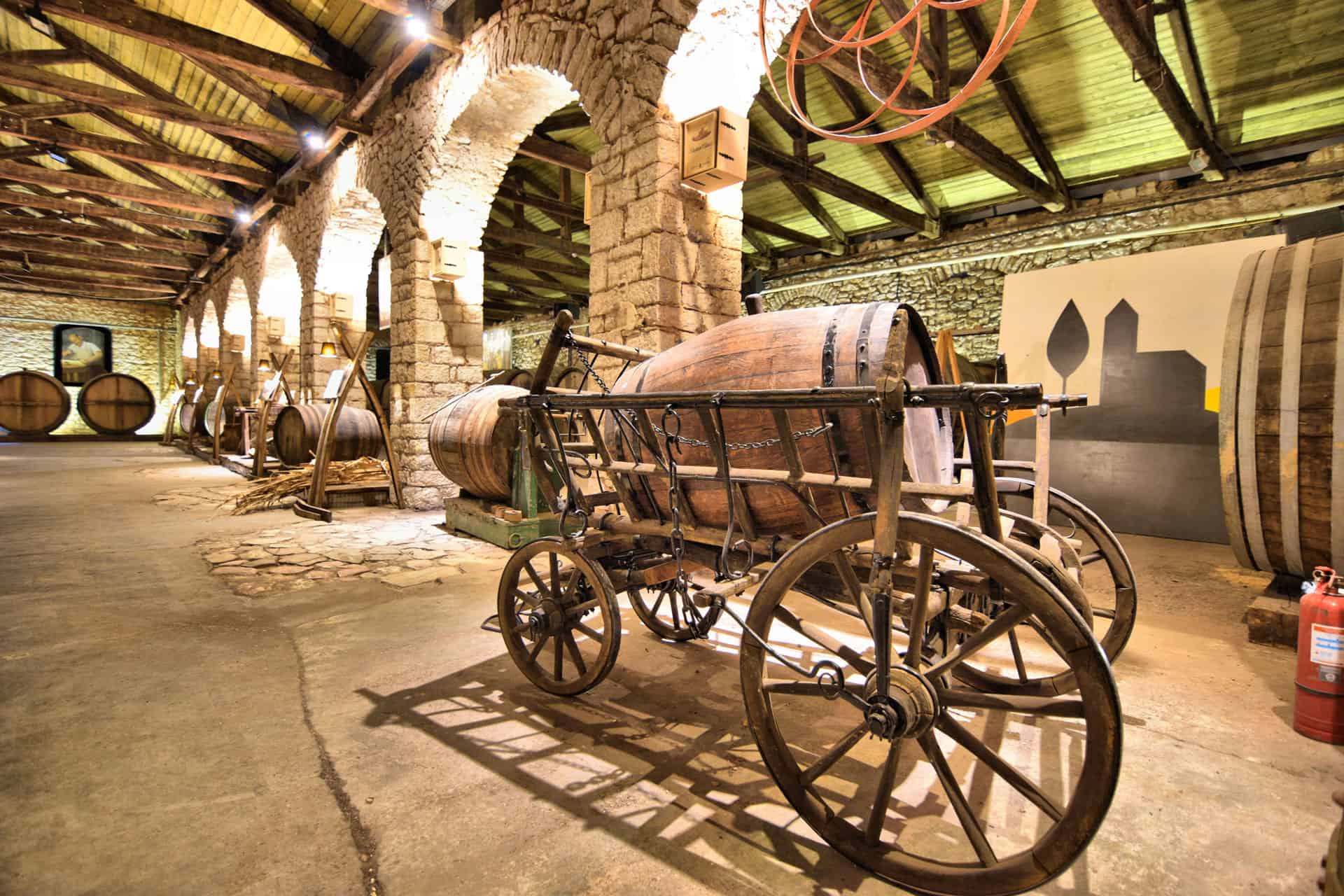
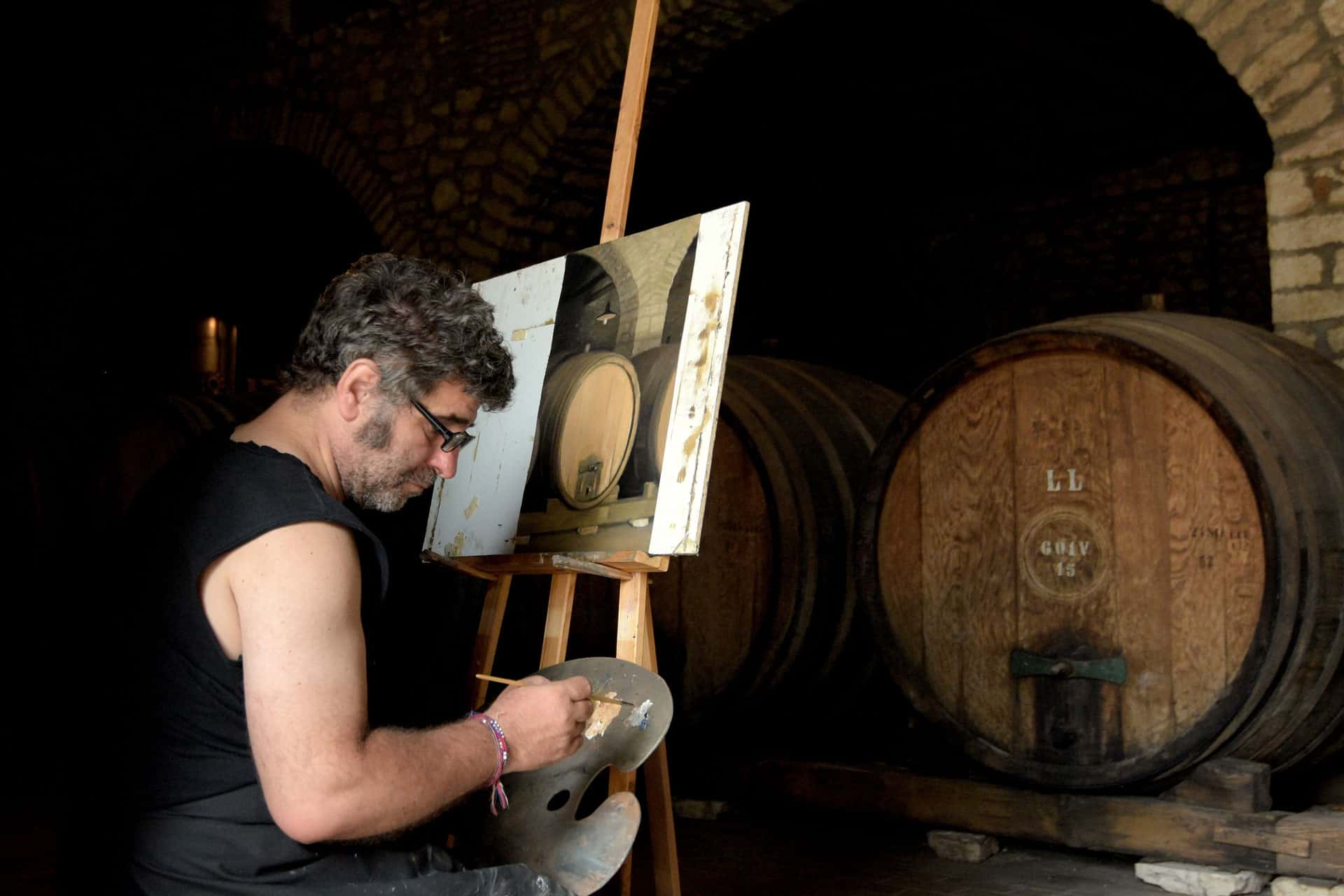
One of the highlights of the tour is the display of several magnificently-carved barrels, still full of precious old wine. The collection of the still-full, carved barrels include two giants from 1882 that hold 13,192 liters, (3400 gallons!) of Mavrodaphne – enough to fill over 17,000 bottles – commemorating the Royal visit by Queen Olga and King George I of Greece. A series of barrels carved in 1968-69 by Nikolaos Stephanidis, the last hand-woodcarver of Patras, depict scenes from Ancient Greek Mythology, one of them of “King Dionysos, sailing on the sea of wine,” as well as many other barrels dedicated to distinguished visitors. Recent visitors from the St. Thomas Greek Orthodox Parish in New Jersey, Nikos & George Pappas, are amazed at their sheer size!
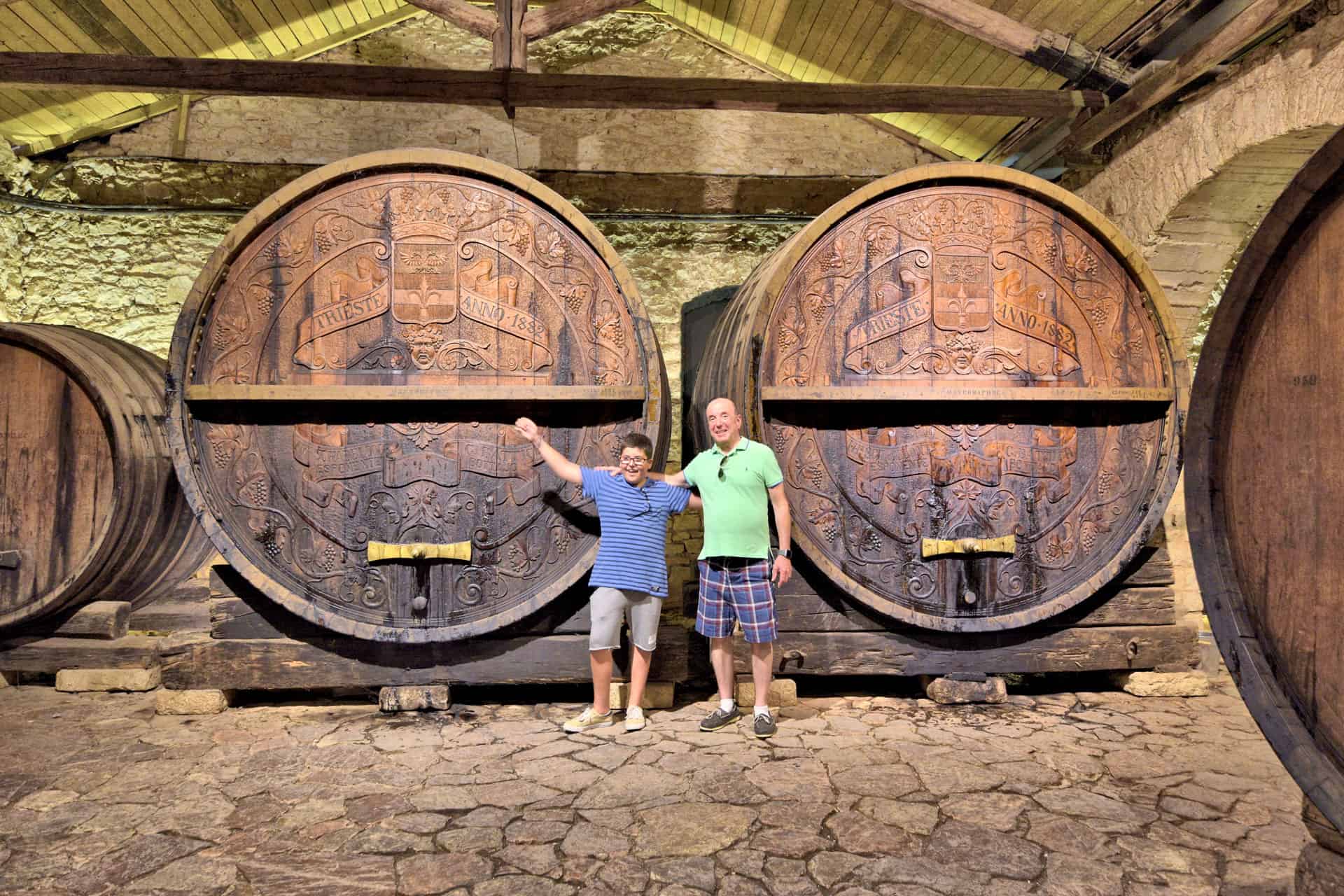
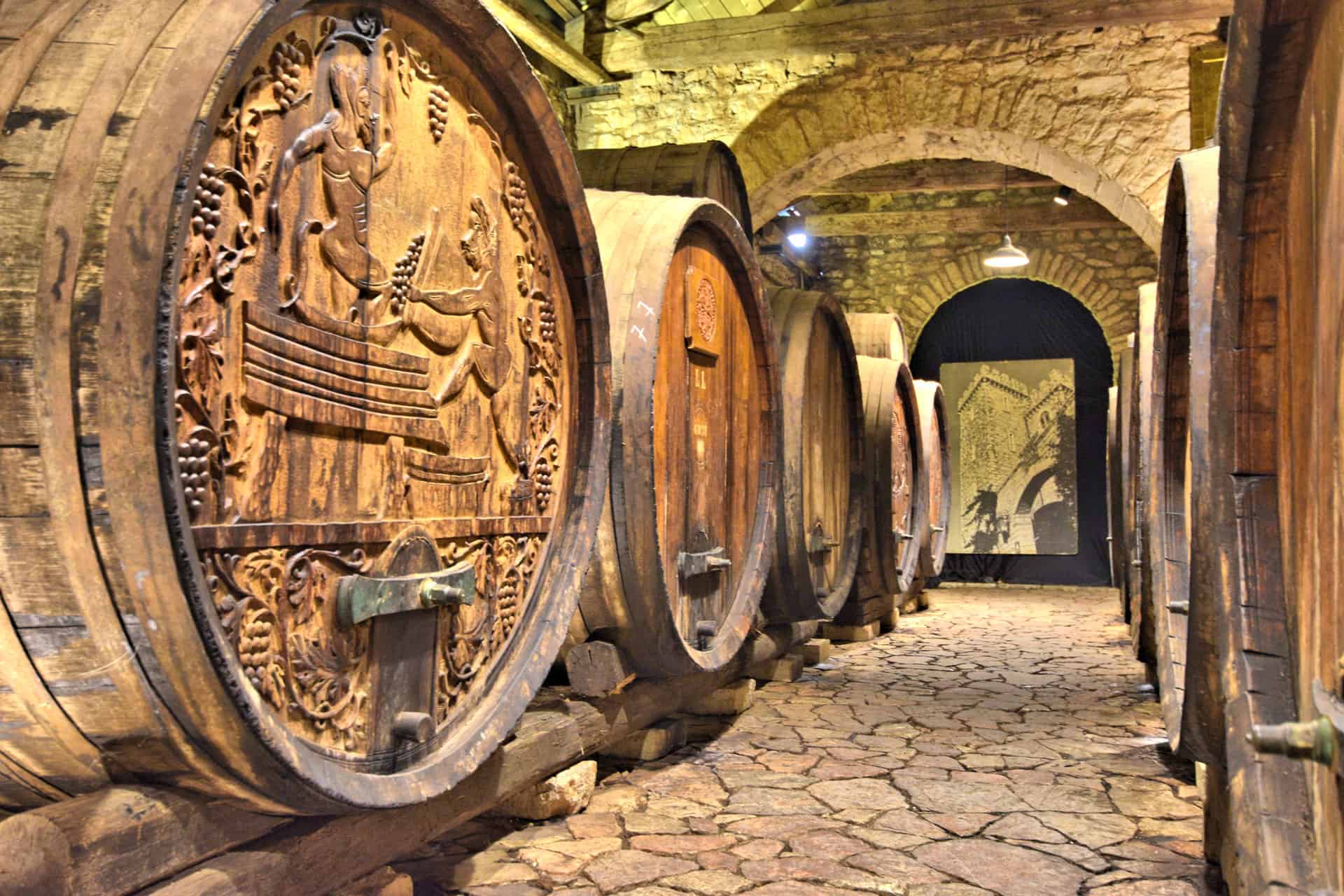
Samples of the house wines – including of course “Mavrodaphne” – are provided in the charming Bavarian-style reception hall/tasting room. Visitors can sit to enjoy the wines on the barrel-shaped chairs, and have a view of modern Patra, a port city of 200,000 people, from the adjacent balcony.
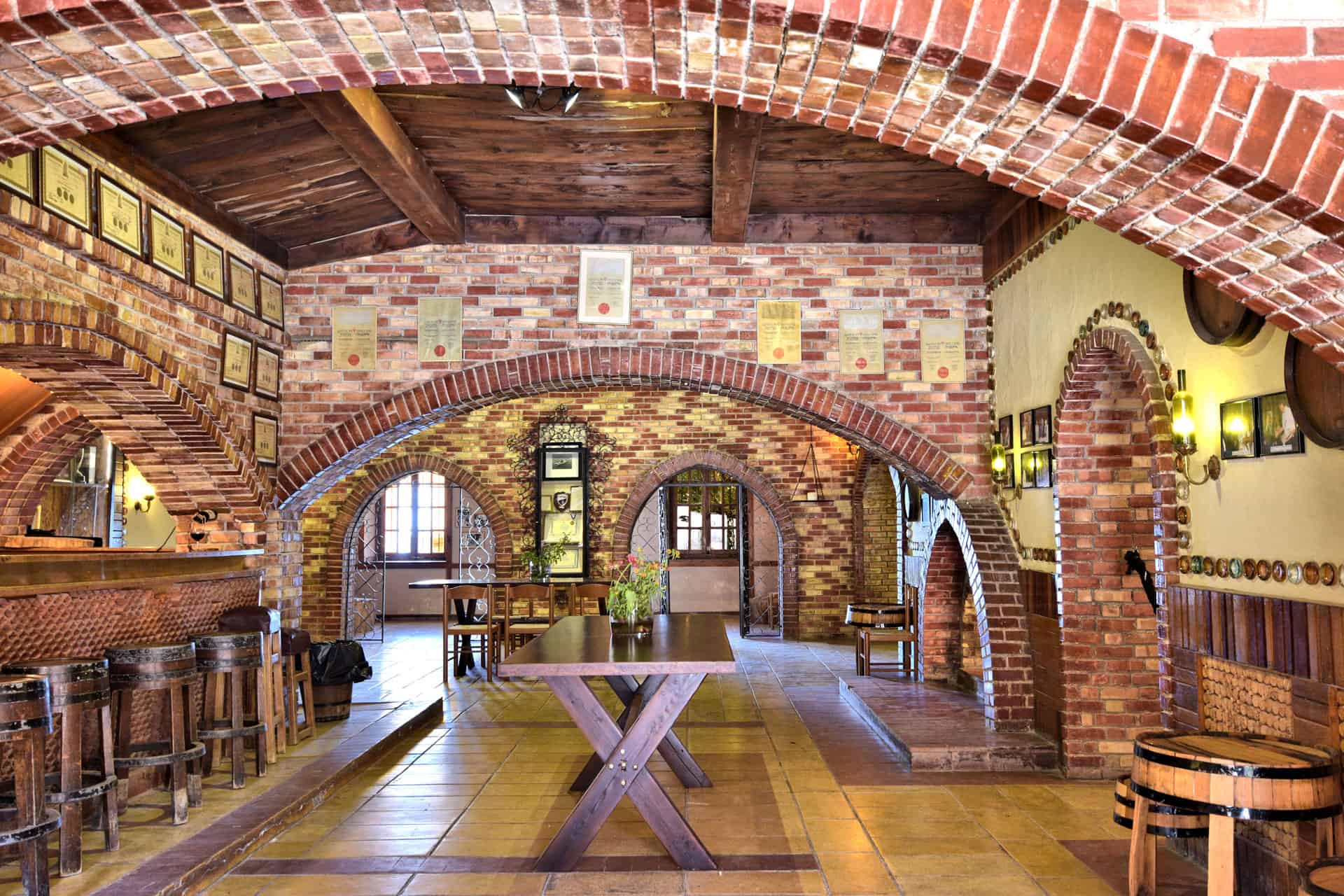
In the Fall, Achaia Clauss holds a public event, where people come and help pick the grapes from the vineyards, and this year was no exception: hundreds of volunteers enjoy picking the “Mavrodaphne” grapes and help with their harvest. Children are especially welcome, and this year they were given rides on a horse-drawn cart, and the whole affair is crowned by a picnic/feast – served with wine for the adults, of course.
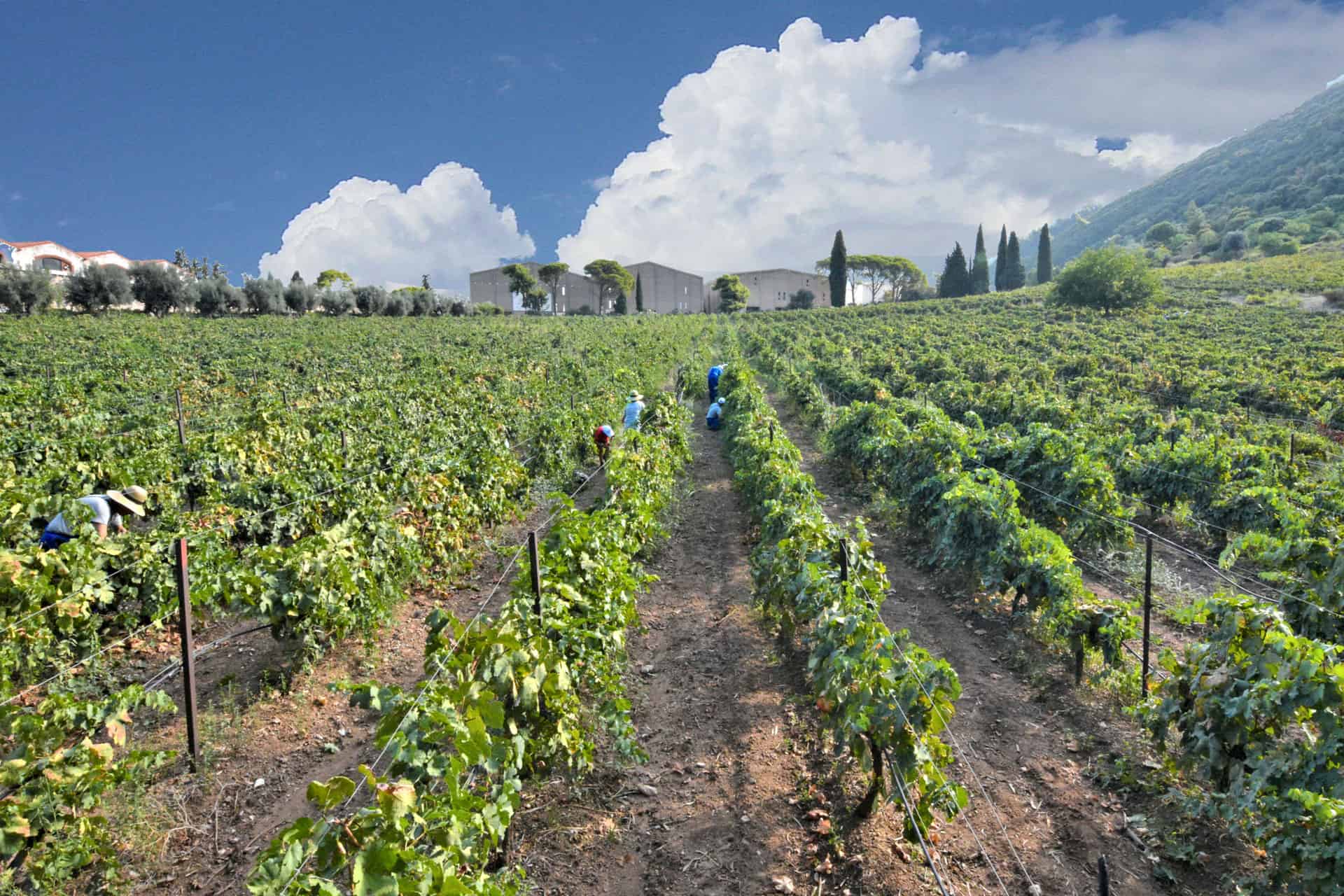
This winery has grown together with young Greece and expanded its size and horizons, culture, traditions, and products to full maturity. Yet, instead of resting on their substantial laurels, I was told by Tonia Rapti, historian, and tour guide emeritus, that Achaia Clauss is on the brink of introducing to the US several fresh, and some experimental, labels in the near future, thus combining its 157-year old traditions with a young in spirit, forward-looking modern face. Something I’m personally looking forward to.
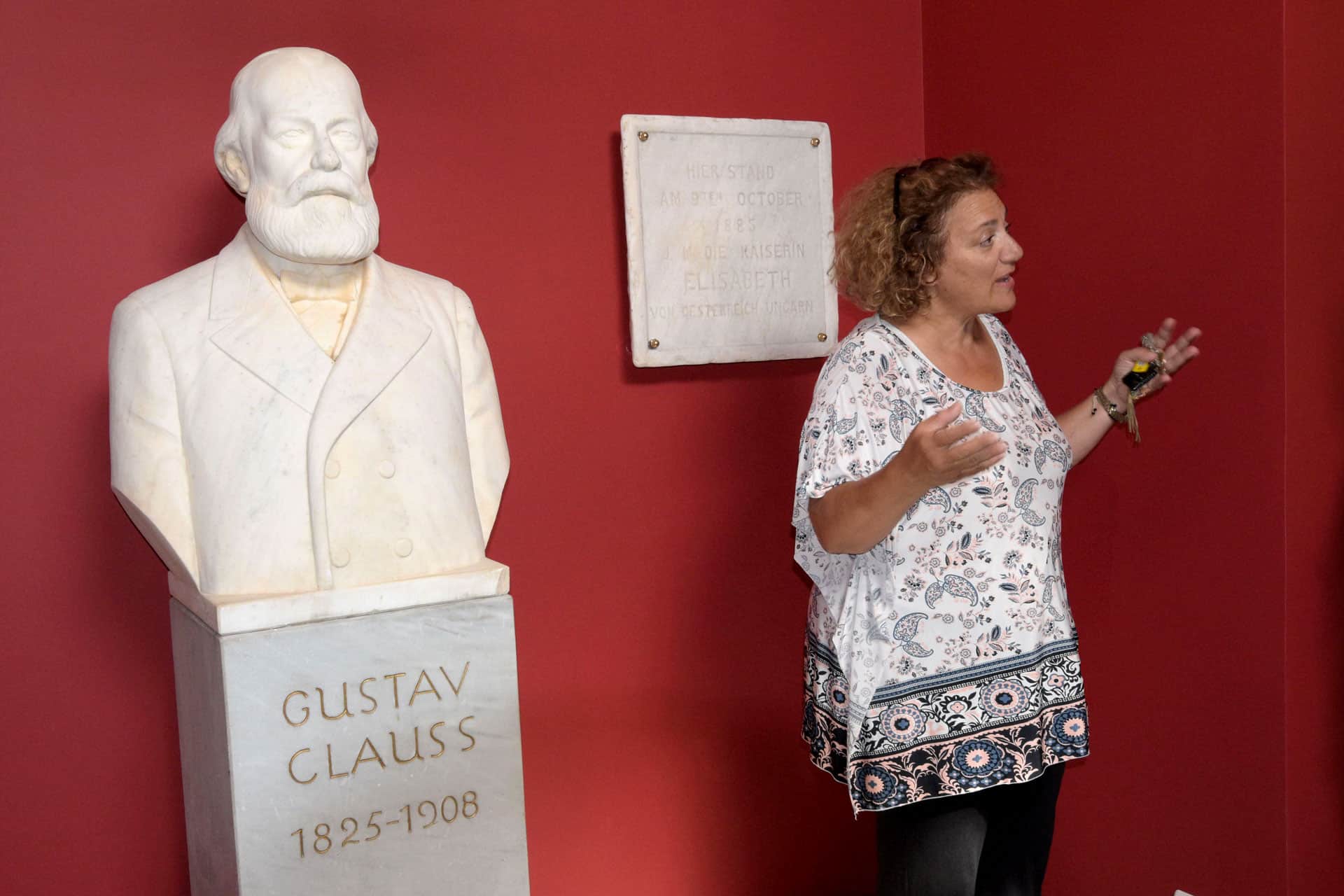
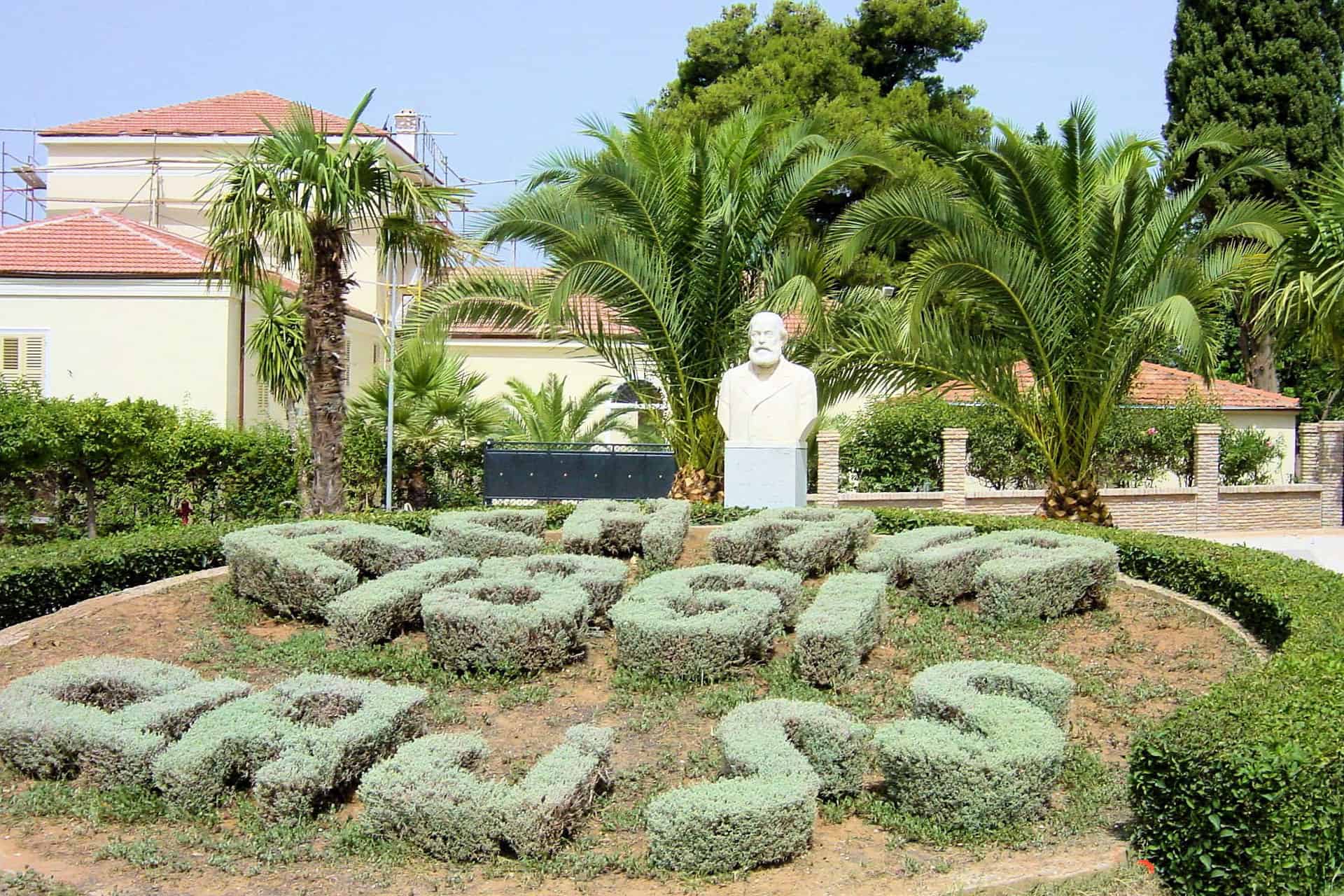
So, as you are enjoying one of the Achaia Clauss wines with a light dinner, or sipping a little “Mavrodaphne” afterward, think of this exquisite place on the hills above Patra, and the interesting times of the establishment of the oldest winery in Greece.


